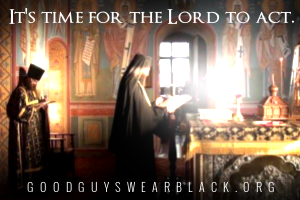 It’s older than you’ve been told!
It’s older than you’ve been told!
The present Feast, commemorating the Nativity in the flesh of our Lord Jesus Christ, was established by the Church. Its origin goes back to the time of the Apostles.
In the Apostolic Constitutions (Section 3, 13) it says,
“Brethren, observe the feastdays; and first of all the Birth of Christ, which you are to celebrate on the twenty-fifth day of the ninth month.”
In another place it also says,
“Celebrate the day of the Nativity of Christ, on which unseen grace is given man by the birth of the Word of God from the Virgin Mary for the salvation of the world.”
In the second century St Clement of Alexandria also indicates that the day of the Nativity of Christ is December 25. In the third century St Hippolytus of Rome mentions the Feast of the Nativity of Christ, and appoints the Gospel readings for this day from the opening chapters of St Matthew.
In 302, during the persecution of Christians by Maximian, 20,000 Christians of Nicomedia (December 28) were burned in a church on the very Feast of the Nativity of Christ. In that same century, after the persecution when the Church had received freedom of religion and had become the official religion in the Roman Empire, we find the Feast of the Nativity of Christ observed throughout the entire Church.
There is evidence of this in the works of St Ephraim the Syrian, St Basil the Great, St Gregory the Theologian, St Gregory of Nyssa, St Ambrose of Milan, St John Chrysostom and other Fathers of the Church of the fourth century.
St John Chrysostom, in a sermon which he gave in the year 385, points out that the Feast of the Nativity of Christ is ancient, and indeed very ancient. In this same century, at the Cave of Bethlehem, made famous by the Birth of Jesus Christ, the empress St Helen built a church, which her mighty son Constantine adorned after her death. In the Codex of the emperor Theodosius from 438, and of the emperor Justinian in 535, the universal celebration of the day of the Nativity of Christ was decreed by law.
Thus, Nicephorus Callistus, a writer of the fourteenth century, says in his History that in the sixth century, the emperor Justinian established the celebration of the Nativity of Christ throughout all the world.
Patriarch Anatolius of Constantinople in the fifth century, Sophronius and Andrew of Jerusalem in the seventh, Sts John of Damascus, Cosmas of Maium and Patriarch Germanus of Constantinople in the eighth, the Nun Cassiane in the ninth, and others whose names are unknown, wrote many sacred hymns for the Feast of the Nativity of Christ, which are still sung by the Church on this radiant festival.
During the first three centuries, in the Churches of Jerusalem, Antioch, Alexandria and Cyprus, the Nativity of Christ was combined together with the Feast of His Baptism on January 6, and called “Theophany” (“Manifestation of God”). This was because of a belief that Christ was baptized on the anniversary of His birth, which may be inferred from St John Chrysostom’s sermon On the Nativity of Christ:
“It is not the day on which Christ was born which is called Theophany, but rather that day on which He was baptized.”
In support of such a view, it is possible to cite the words of the Evangelist Luke who says that
“Jesus began to be about thirty years of age” (Luke 3:23)
when He was baptized. The joint celebration of the Nativity of Christ and His Theophany continued to the end of the fourth century in certain Eastern Churches, and until the fifth or sixth century in others.
The present order of services preserves the memory of the ancient joint celebration of the Feasts of the Nativity of Christ and Theophany. On the eve of both Feasts, there is a similar tradition that one should fast until the stars appear. The order of divine services on the eve of both feastdays and the feastdays themselves is the same.
The Nativity of Christ has long been counted as one of the Twelve Great Feasts. It is one of the greatest, most joyful and wondrous events in the history of the world. The angel said to the shepherds,
“Behold, I bring you good tidings of great joy, which shall be to all people. For unto you is born this day in the city of David a Savior, Who is Christ the Lord. And this shall be a sign unto you: you shall find the babe wrapped in swaddling clothes, lying in a manger. Then suddenly there was with the angel a multitude of the heavenly hosts, glorifying God and saying: Glory to God in the Highest, and on earth peace, good will toward men.”
Those who heard these things were astonished at what the shepherds told them concerning the Child.
“And the shepherds returned, glorifying and praising God for all the things that they had heard and seen” (Luke 2:10-20).
Thus the Nativity of Christ, a most profound and extraordinary event, was accompanied by the wondrous tidings proclaimed to the shepherds and to the Magi. This is a cause of universal rejoicing for all mankind,
“for the Savior is Born!”
Concurring with the witness of the Gospel, the Fathers of the Church, in their God-inspired writings, describe the Feast of the Nativity of Christ as most profound, and joyous, serving as the basis and foundation for all the other Feasts.
